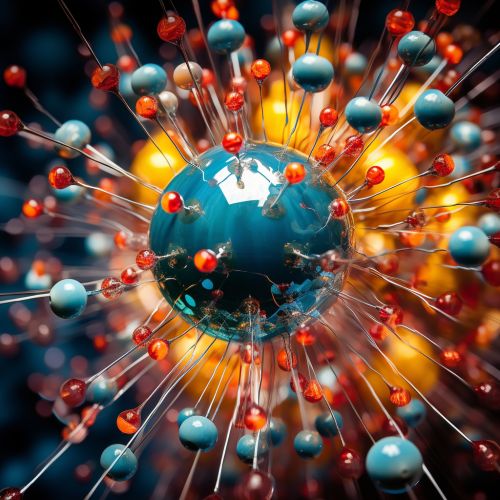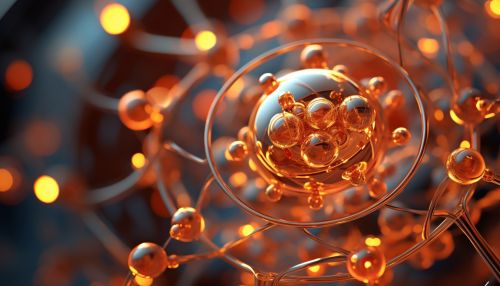Nucleosynthesis
Introduction
Nucleosynthesis is the process that creates new atomic nuclei from pre-existing nucleons, primarily protons and neutrons. The first theories of nucleosynthesis were first proposed by George Gamow, Ralph Alpher, and Robert Herman in the late 1940s. The processes involved in nucleosynthesis include a series of nuclear reactions that produce light elements like hydrogen and helium, as well as heavier elements like iron and nickel.


Stellar Nucleosynthesis
Stellar nucleosynthesis is the process by which elements are created within stars by combining the protons and neutrons together from the nuclei of lighter elements. All of the atoms in the universe began as hydrogen. Fusion inside stars transforms hydrogen into helium, heat, and radiation. Further stellar evolution, including supernova explosions, can also lead to the synthesis of heavier elements.
Big Bang Nucleosynthesis
Big Bang nucleosynthesis (BBN) is the production of nuclei other than those of the lightest isotope of hydrogen during the early phases of the Universe. It is believed to be responsible for the formation of hydrogen-1, helium-4, deuterium, and a small amount of lithium. The theory of BBN offers a detailed mathematical description of the production of light elements in the early universe.
Supernova Nucleosynthesis
Supernova nucleosynthesis occurs when a star explodes. During this process, elements heavier than iron are formed. This happens as the supernova explosion progresses, the star's temperature increases, and the rate of nuclear reactions becomes rapid. The elements produced during supernova nucleosynthesis include elements heavier than iron, up to uranium and beyond.
Cosmic Ray Spallation
Cosmic ray spallation is a form of naturally occurring nuclear fission and nucleosynthesis. It refers to the formation of elements from the impact of cosmic rays on an object. Cosmic rays are highly energetic particles originating from outside the Solar System that impinge on Earth’s atmosphere. When these particles collide with atoms in the atmosphere, they can break apart atomic nuclei, leading to the formation of new elements.
Nucleosynthesis and Chemical Evolution of Galaxies
The chemical evolution of galaxies is the result of a complex interplay between the formation of stars, the evolution of stars, and the process of nucleosynthesis. The distribution of elements in galaxies provides important clues to the processes of star formation and the history of nucleosynthesis in the universe.
